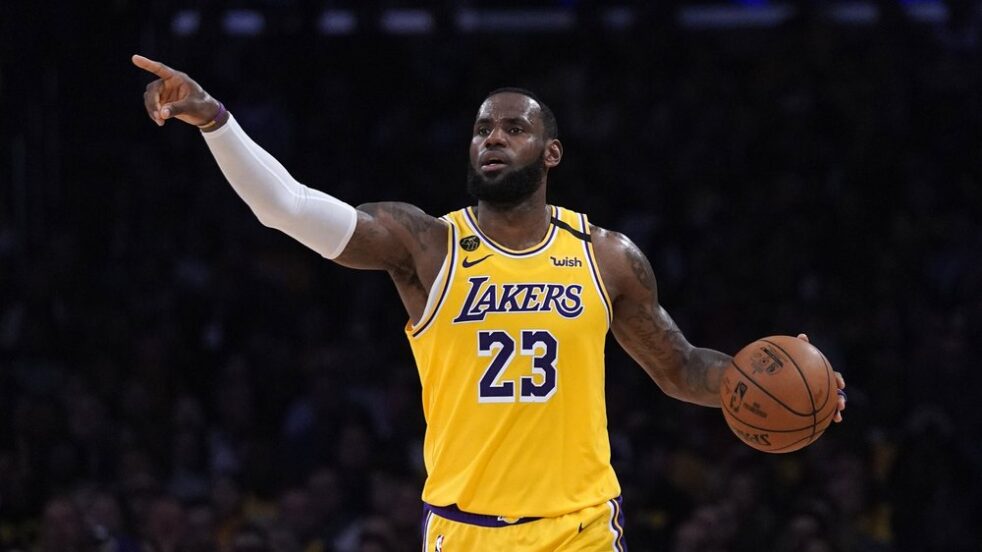It feels like some players are never meant to retire. Sports pundits have been predicting Tom Brady’s decline for years now. Lebron James was foretold to fall off after his supposed prime in Miami and again after he left Cleveland a second time. Zlatan Ibrahimovic, Serena Williams, Jaromir Jagr, and an increasing number of athletes are playing at a high level well past their athletic primes. Is this phenomenon simply recency bias or the development of better dietary and recovery practices, lengthening the careers of the world’s best athletes?
Success begets success in the case of many of these athletes. Without the income provided by sustaining elite play, players are less able to afford the gaudy costs of keeping their bodies in prime shape.
Lebron is the foremost example of a big star spending big money on his health. Reports from 2019 pegged his annual spending on his fitness at around $1.5 million. Russell Wilson claimed to spend over $1 million himself in an interview with Bill Simmons.
It may be love of the sport that keeps some players going since many do play well into their decline. NBA legend Vince Carter, who just retired after last season, was only scoring five points per game in his final season, a far fall from the 20-plus he scored in his peak years. The late Kobe Bryant managed over 17 points per game in his final season, but even that was less than half of his best year and was often seen with ice wraps when on the bench.
Jaromir Jagr entered the NHL in 1990 at the age of 18 and played all the way until 2018, finally retiring from the world’s best hockey league with the second most points of all time at age 45. He still plays in the Czech Republic and contributes just under a point per game in Czech Extraliga at 49 years old. It may be a love for the game that keeps him playing at this point, but he still put up almost 50 points in his age 44 season in the NHL, almost overkill to add to an already magnificent career.
More and more high level players are having extended careers across a number of sports. Alex Rodriguez, Bartolo Colon and Adrian Beltre all played 21 or more seasons in the MLB and only retired in the last few years. Dirk Nowitzki played for over two decades for the Dallas Mavericks and Udonis Haslem is still playing at age 40, albeit only for a few minutes a game. Rafael Nadal and Roger Federer have each been playing tennis for at least eighteen years at an elite level and are still winning titles while Novak Djokovic is coming for their records.
Zdeno Chara, Patrick Marleau and Joe Thornton all debuted in 1997 and are still active in the NHL. Frank Gore has played 16 seasons and garnered almost 20,000 scrimmage yards at the bruising running back position, and a significant number of kickers and punters play into their 40s in the NFL. Drew Brees and Larry Fitzgerald have had long, consistent and illustrious NFL careers as well. Ibrahimovic and Wayne Rooney dominated top flight soccer for years before lighting up the MLS. Zlatan even returned to AC Milan after his stint with the LA Galaxy.
None of these players, however, have quite the impressive reign of dominance as some of the greatest of all time in their respective sports. Brady and Lebron are both in the GOAT conversation in football and basketball respectively. Brady just won his seventh Super Bowl at age 43, and it is his fourth title since turning 37.
Brady became the oldest MVP in league history at 40, winning his third. To still be the best at that age takes investment, and videos of massage tables in his massive houses and offseason training in scenic locations like the Bahamas show that he spares no cost.
Lebron started a streak of eight straight finals appearances when he was 26, in what would be most players’ prime. He had already been in the league for eight seasons and made it to the 2007 finals in his young career, but this streak consisted of his age 26 through 33 seasons. Most players are at least out of the league or beginning to decline at age 33, but after an age 34 season plagued by injuries, he bounced back to win his fourth title at 35 years old, leading the league in assists in the process.
Even in the early games of this, his 18th season, he is dominant again. After over 1,500 games including playoffs, he is dropping 25/8/8 on nearly 50% shooting. He throws down ferocious dunks like a young player and has upgraded the finer parts of his game to account for any wear years of elite play may have had on his body. Before his age 32 season he only had one year with over eight assists per game; he has eclipsed that mark every season since then. Advanced training and taking elite care of his physical health have kept him at near-MVP level play into what should be his decline.
These long careers aren’t a completely new, 21st century feature to sports. Wayne Gretzky, almost unanimously considered the best hockey player ever, had a 20 year NHL career. He only scored under 90 points three times, two of which came in shortened seasons. Michael Jordan still scored 20 points per game in his last season at age 39, though he retired twice earlier in his career and only played 15 total seasons. Brees, George Blanda and Brett Favre all played similar or greater numbers of games than Brady, but all three declined more dramatically than him. This level of sustained greatness, increasing one’s resume even into the 20th season of a career, is a newer phenomenon that comes with greater strides in the science of physical health.
